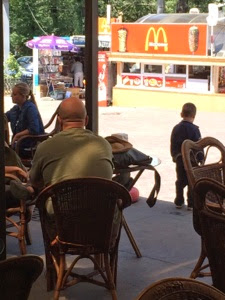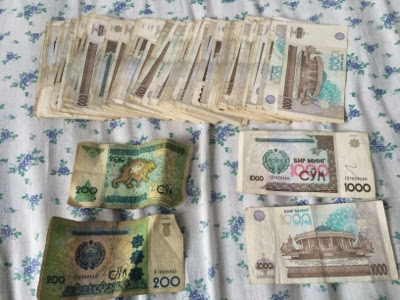Our cabin was sweltering when we first arrived, air barely escaping the AC vent. Dad made friends with the ship's engineer who was able to fix it for us.
One of the surprising things was that we never saw any other ships or boats or anything besides the blue Caspian Sea.
The toilet and shower leaked so much water on the floor that it was better not to use.
Lunch and dinner always started with a delicious soup. The captain and crew ate before us. We ate with the other passengers, a mix of Georgians, Azeris, Russians and a Chechen, who ate with his Russian girlfriend after everyone else was done.
The Chechen and I actually ran into each other in the empty cantina and after the mutual shock, we had tea together and shared photos on our phones of family and home.
There was not much to do on the ship and 28 hours felt like forever so we played at least a dozen backgammon games. Dad would not want me to share the results.
A view inside the cantina. You had to be on time for breakfast (7:15 AM), lunch (12:30 PM) and dinner (6:30 PM) or risk getting the scraps. Scorching hot tea was available 24 hours in tall kettles. There was no coffee.
The other passengers, big muscular round guys, spent the day playing chess and drinking tea. At night the vodka came out, and it did get a little loud, but nothing out-of-hand. These guys had to be ready to move and unload at 5 AM.
Caspian Sea sunset.

























